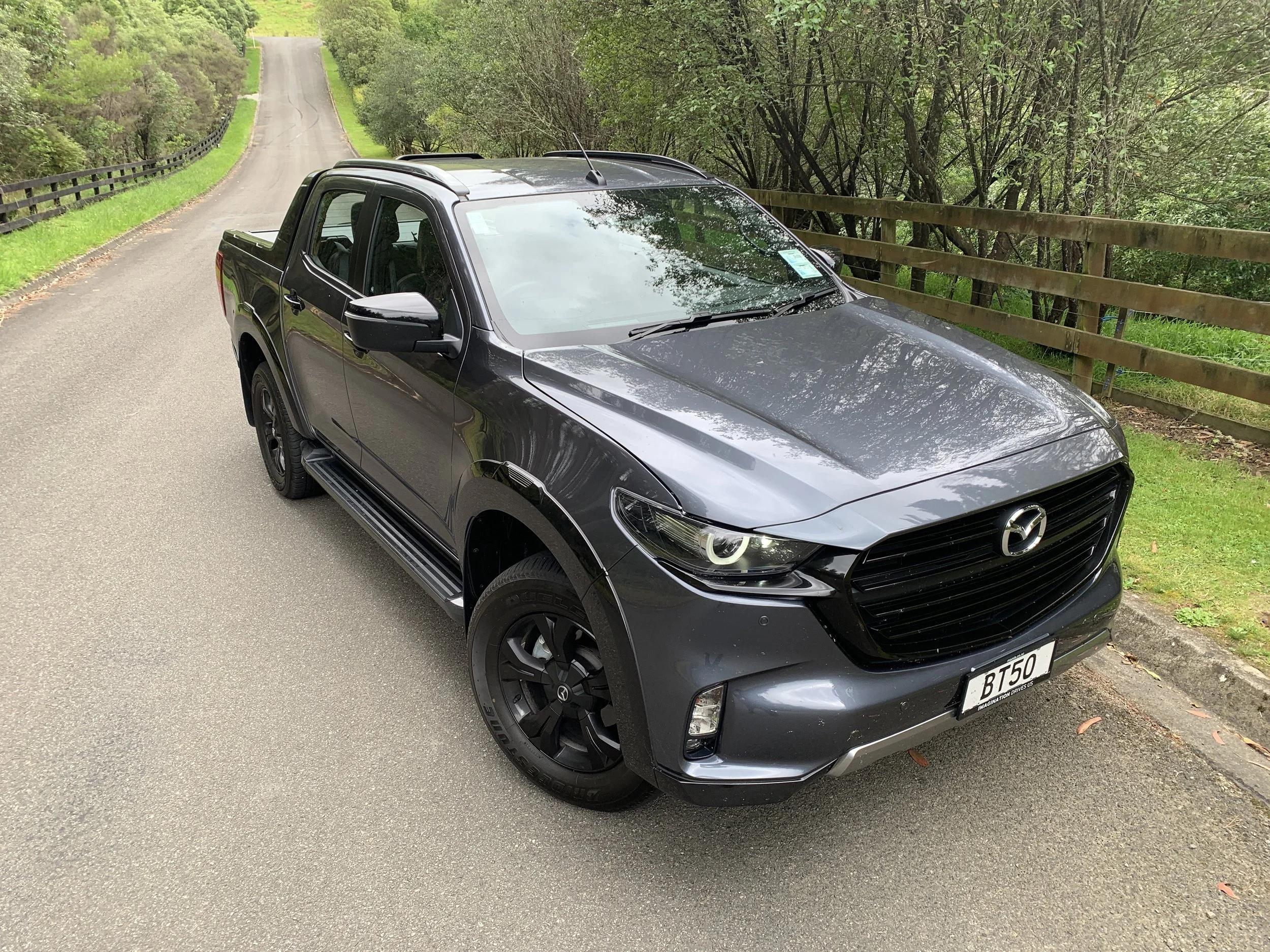BT-50 plugging on through sales bog
/Mazda NZ assures ute is staying on, but says updates meted its Isuzu twin are some months from showing behind their badge.
GREATER distinction between the twinned D-Max and BT-50 seems probable soon, with Mazda here saying it doesn’t expect to include for some months yet styling changes and refinements just delivered to the Isuzu.
Mazda New Zealand comment comes along with a reassurance that their one-tonne will remain in supply, with no decision made to withdraw it.
“We’ve still got them, we’re still selling them, we’re still promoting them, we’re still ordering them,” a spokesman said.
2023 will stand as an especially tough year for the nameplate, with just 347 registered according to Government registrations data.
That count is well short of the D-Max, which according to Government data accrued 1035 registrations.
It’s also totally out of touch with the model it used to base off, the Ford Ranger, which in claiming 9907 registrations last year not only topped the ute standings but also was the country’s best-selling new vehicle.
BT-50 was also outsold by the Toyota Hilux, on 8054 registrations, the Mitsubishi Triton (3105) and the Nissan Navajo, with 1143.
BT-50 and D-Max are built along side each other in Samut Prakan, Thailand, and share the same engine, chassis and driveline.
Many interior components are mirrored between the two models, but the design and range implementation is different. Isuzu has a bigger range but Mazda’s pricing is also lower when common models are compared.
The points of separation could extend now, as Isuzu’s model has started to roll out locally with revisions announced last October.
The 2024 D-Max has a bold new front-end, redesigned wheels, new tail-lights, and an overhauled interior – including volume and tuning dials for the infotainment system – with new seat patterns, and new interior trim highlights.
The Mazda NZ spokesman says it is not clear, yet, if every change wrought to D-Max would also arrive for BT-50, but said it will likely attune with whatever Mazda Australia takes.
“That I can’t go into. We do have updates that are available but obviously we also, from that car line’s perspective, we are quite aligned with our friends across the Tasman.
“They are one of the lead market for that product.”
He also enforced that any detail changes were, in any case, some months away.
“We run at a different cycle timing to the D-Max … we buy our vehicles from Isuzu under an OEM (original equipment manufacturer) arrangement but have a different timing.”
Mazda’s current model launched in 2021 and delivers purely in the well side, double cab format that is highly preferred by customers.
The primary engine is a 3.0-litre four-cylinder turbo-diesel with 140kW and 450Nm output.
Last year Mazda NZ moved rear-drive editions to a 110kW/350Nm 1.9-litre turbo-diesel engine, to ease then burden of a Clean Car Discount CO2 penalty that was wiped at the end of last year. When the 2.0-litre landed in April, the company claimed it to be the lowest-CO2 diesel ute on sale in the country.
The 3.0-litre maintains in GSX/GTX as well as high-end Limited and Takami models, all in four-wheel-drive.
Those have become subject to recall, owing to a fuel line fault which could cause the ute's engine to catch fire.
Isuzu has cited a manufacturing issue, from which the fuel hose “may chafe against the engine oil level bracket and become damaged. If this occurs, fuel may leak in the presence of an external ignition source resulting in a vehicle fire.”
No incidents have been reported in NZ and the spokesman said the recall is progressing well.
“The recall has been enacted and affected owners contacted.”
The Isuzu-sourced BT-50 replaced a second-generation (UP/UR series) on a shared platform with the PXII Ford Ranger.
Mazda executives have always said that the only way it could make a ute such as the BT-50 viable was to use another brand’s architecture.


















